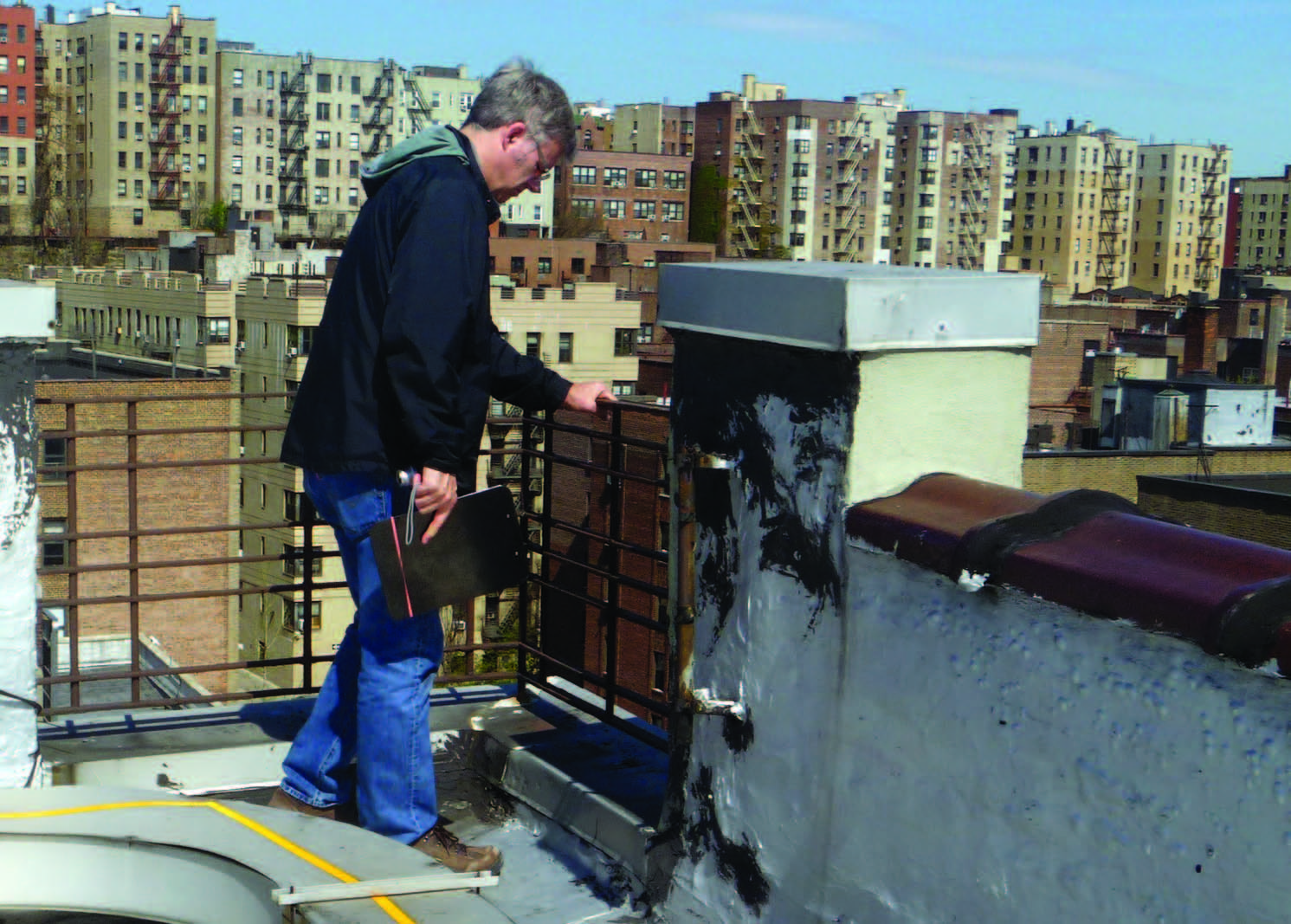While state and local building, fire, and occupational safety codes have the effect of making roofs, balconies, and terraces more secure for users, the tangled web of requirements can wreak havoc with a building owner’s exterior envelope project.
Where existing railings—also known as guards—need replacement to meet stringent code requirements, the expense of thousands of linear feet of new railings can be an unexpected blow to a project budget.
Lacking familiarity with current requirements, some owners or managers complete a roof or balcony rehabilitation, only to learn after the fact that they need to tear noncompliant railings out of their new roof or terrace and install new ones.
The best strategy is to learn how railing regulations could impact the scope, logistics, and schedule of a building envelope project—and its cost.
LEARNING OBJECTIVES
After reading this article, you should be able to:
+ Distinguish among various code requirements for railings to determine applicable standards.
+ Apply the Secretary of the Interior’s Standards for the Treatment of Historic Properties.
+ Evaluate existing balcony and roof railings for signs of distress and failure, and diagnose the probable cause of deficiencies.
+ Implement appropriate strategies for railing repair, alteration, or replacement to meet building code requirements.
About the Authors: John P. Graz, AIA, is a Senior Architect with , Inc., with more than 20 years leading project teams in architectural design and restoration. Rachel C. Palisin, PE, LEED AP BD+C, is a Project Engineer with Hoffmann Architects, based in the firm’s New York City office.
TAKE THIS FREE AIA COURSE AT BDCUNIVERSITY
Related Stories
| Aug 11, 2010
Morphosis builds 'floating' house for Brad Pitt's Make It Right New Orleans foundation
Morphosis Architects, under the direction of renowned architect and UCLA professor Thom Mayne, has completed the first floating house permitted in the U.S. for Brad Pitt’s Make It Right Foundation in New Orleans.The FLOAT House is a new model for flood-safe, affordable, and sustainable housing that is designed to float securely with rising water levels.
| Aug 11, 2010
PCA partners with MIT on concrete research center
MIT today announced the creation of the Concrete Sustainability Hub, a research center established at MIT in collaboration with the Portland Cement Association (PCA) and Ready Mixed Concrete (RMC) Research & Education Foundation.
| Aug 11, 2010
29 Great Solutions for the AEC Industry
AEC firms are hotbeds of invention and innovation to meet client needs in today's highly competitive environment. The editors of Building Design+Construction are pleased to present 29 "Great Solutions" to some of the most complex problems and issues facing Building Teams today. Our solutions cover eight key areas: Design, BIM + IT, Collaboration, Healthcare, Products, Technology, Business Management, and Green Building.
| Aug 11, 2010
Portland Cement Association offers blast resistant design guide for reinforced concrete structures
Developed for designers and engineers, "Blast Resistant Design Guide for Reinforced Concrete Structures" provides a practical treatment of the design of cast-in-place reinforced concrete structures to resist the effects of blast loads. It explains the principles of blast-resistant design, and how to determine the kind and degree of resistance a structure needs as well as how to specify the required materials and details.







